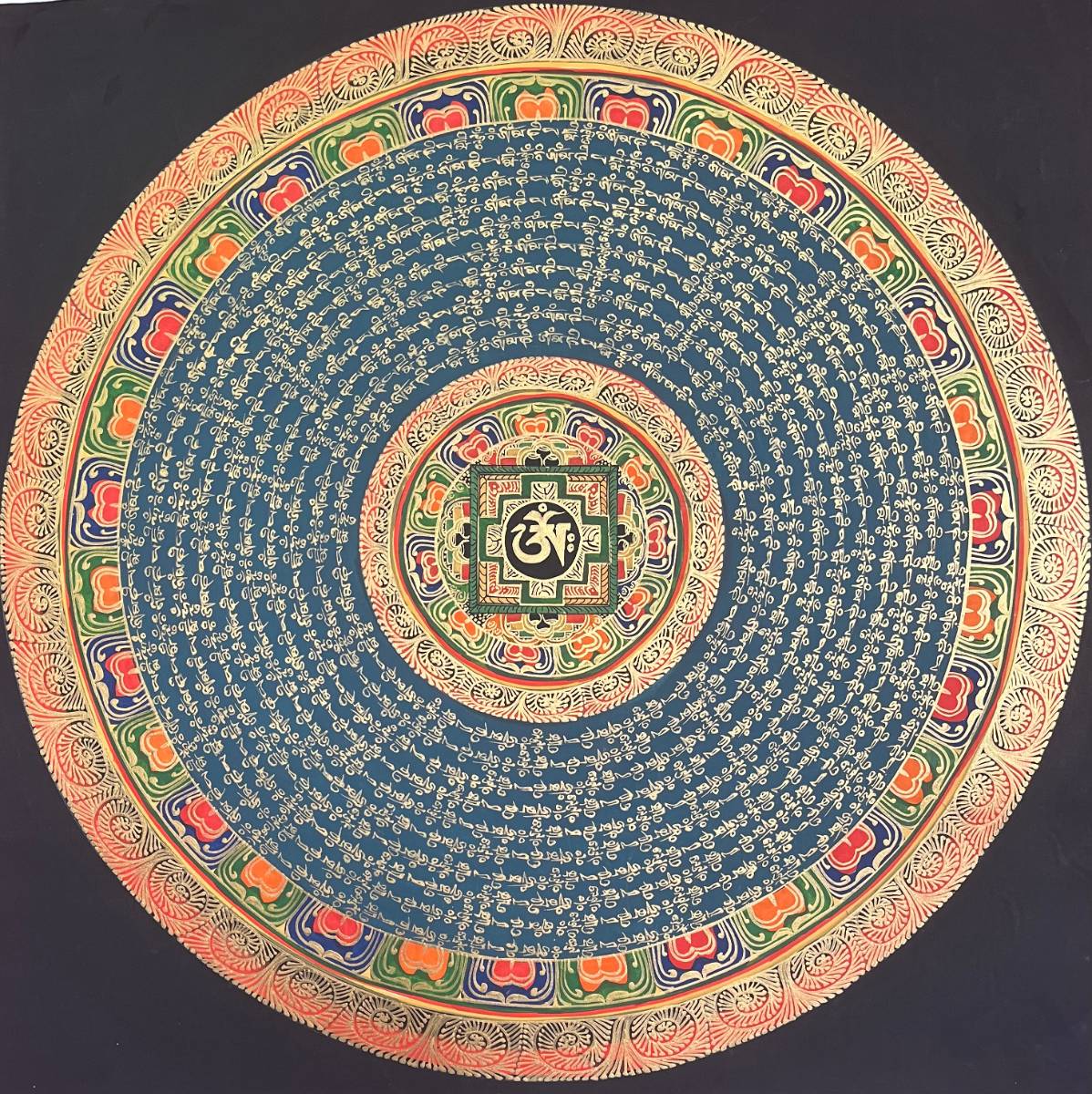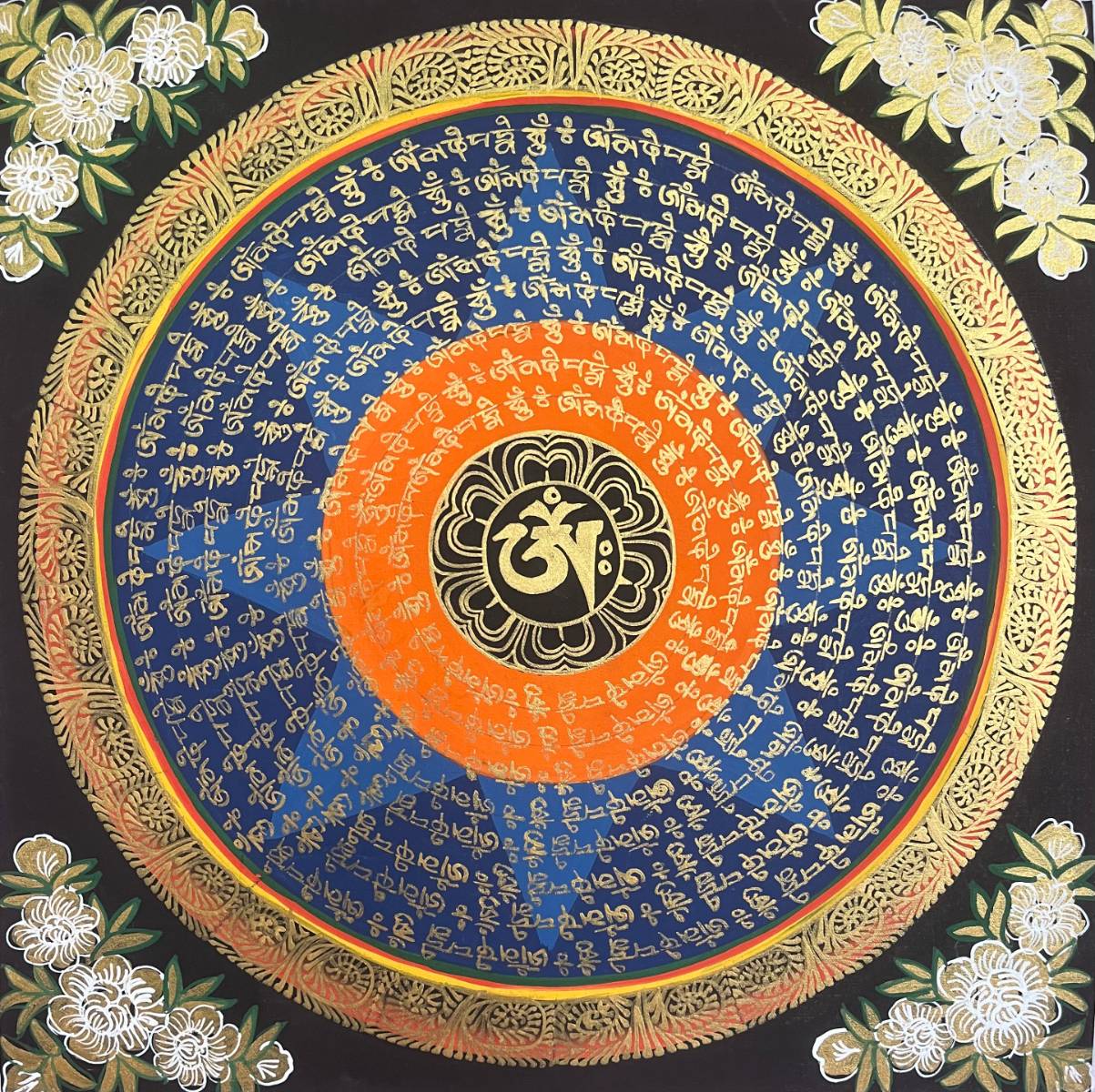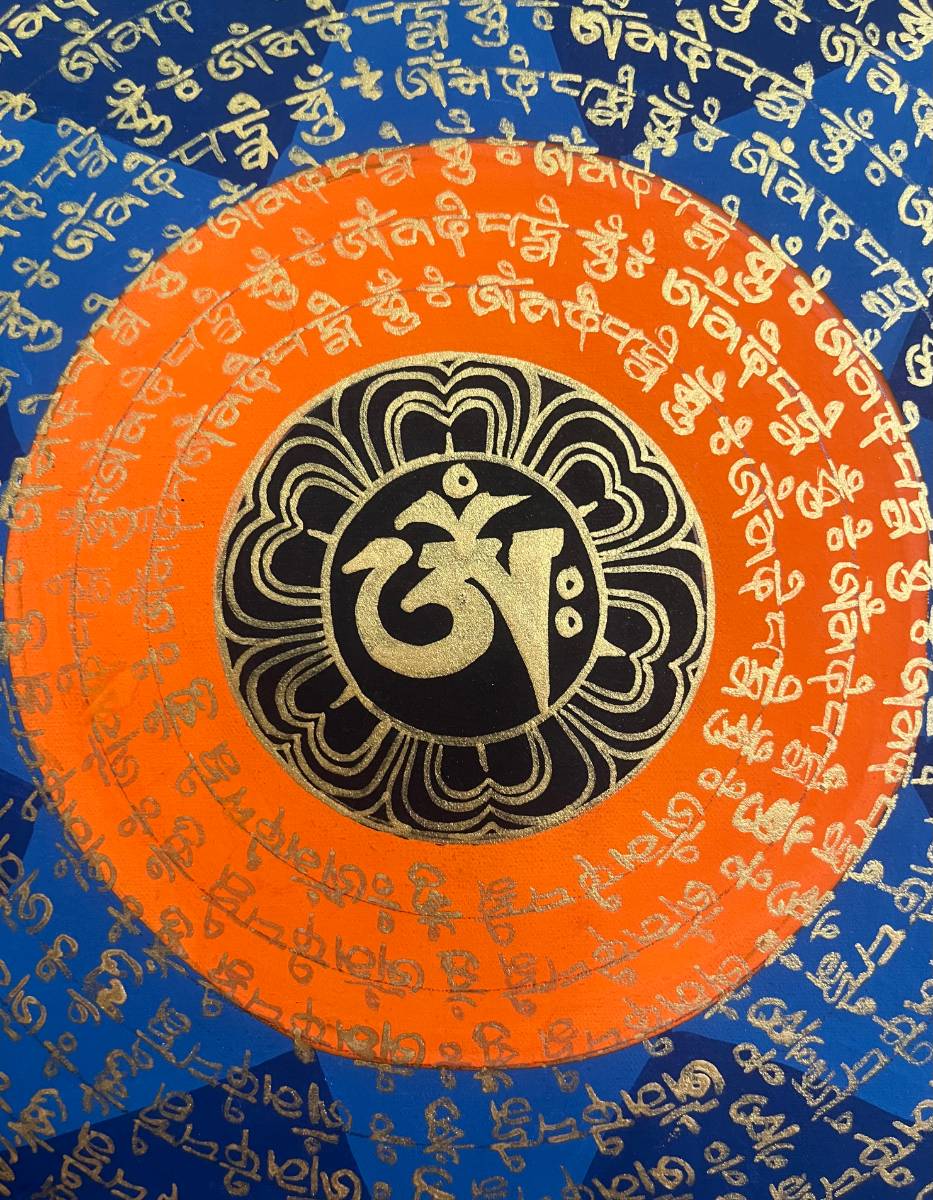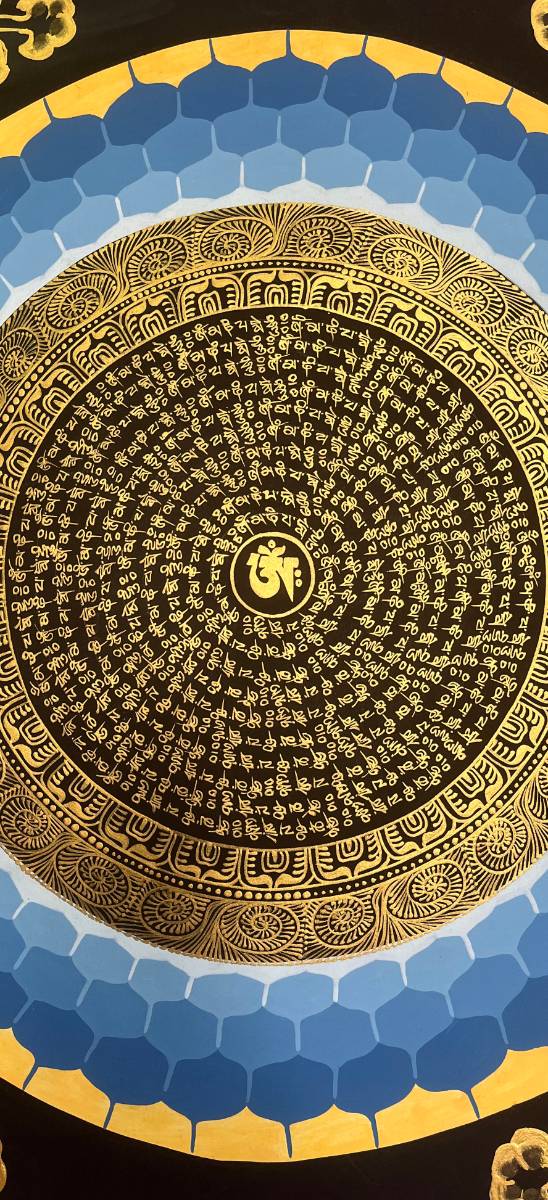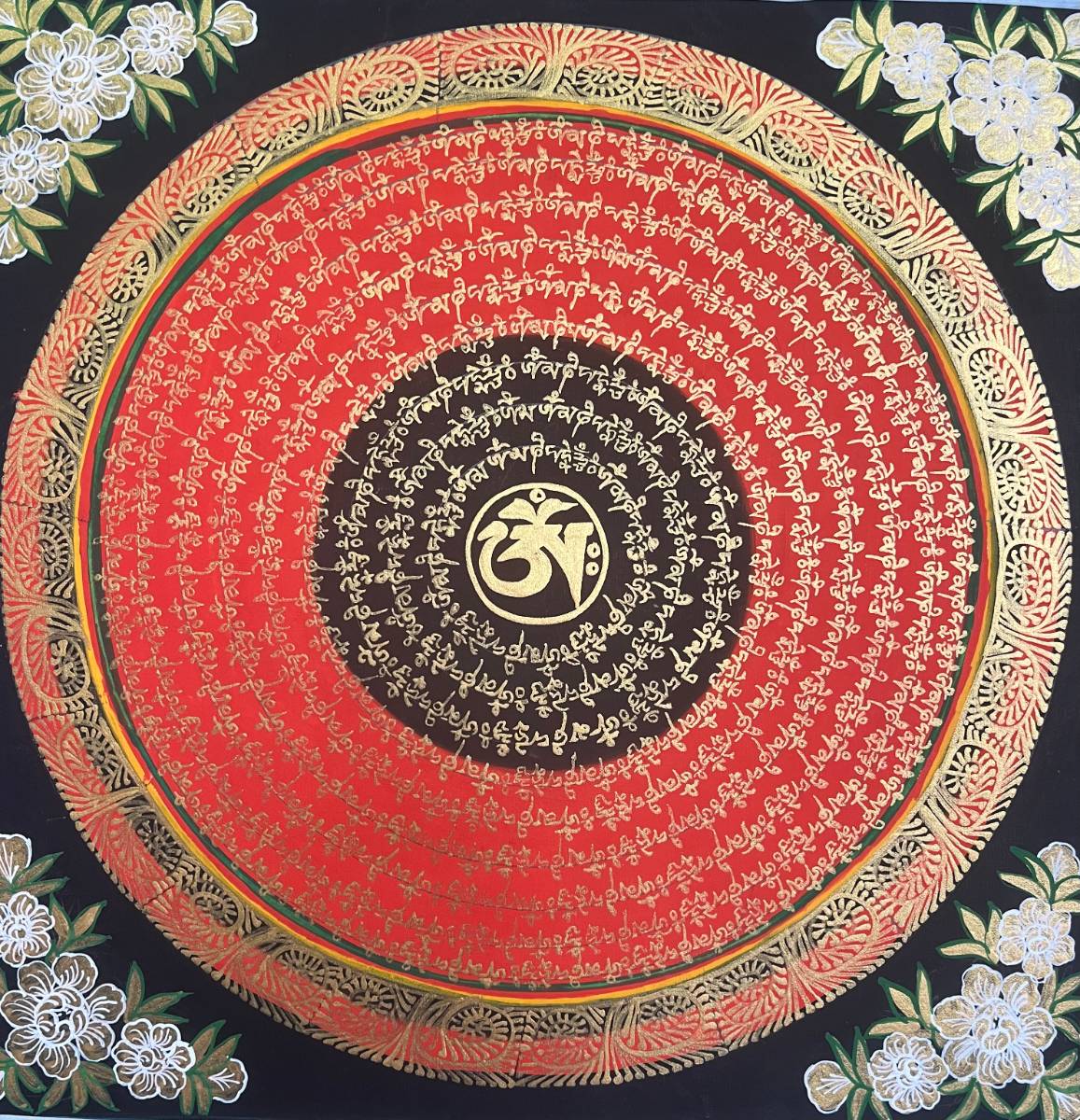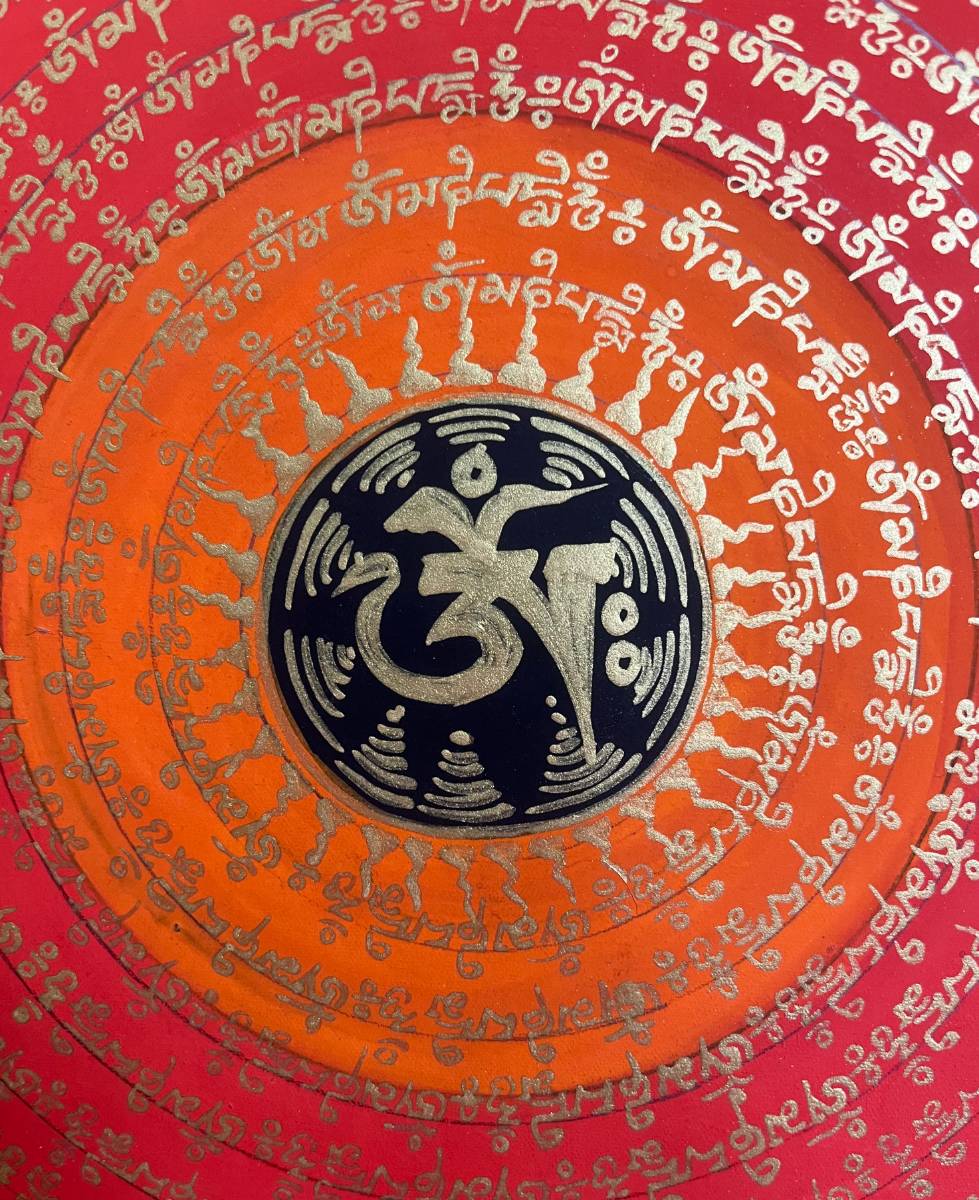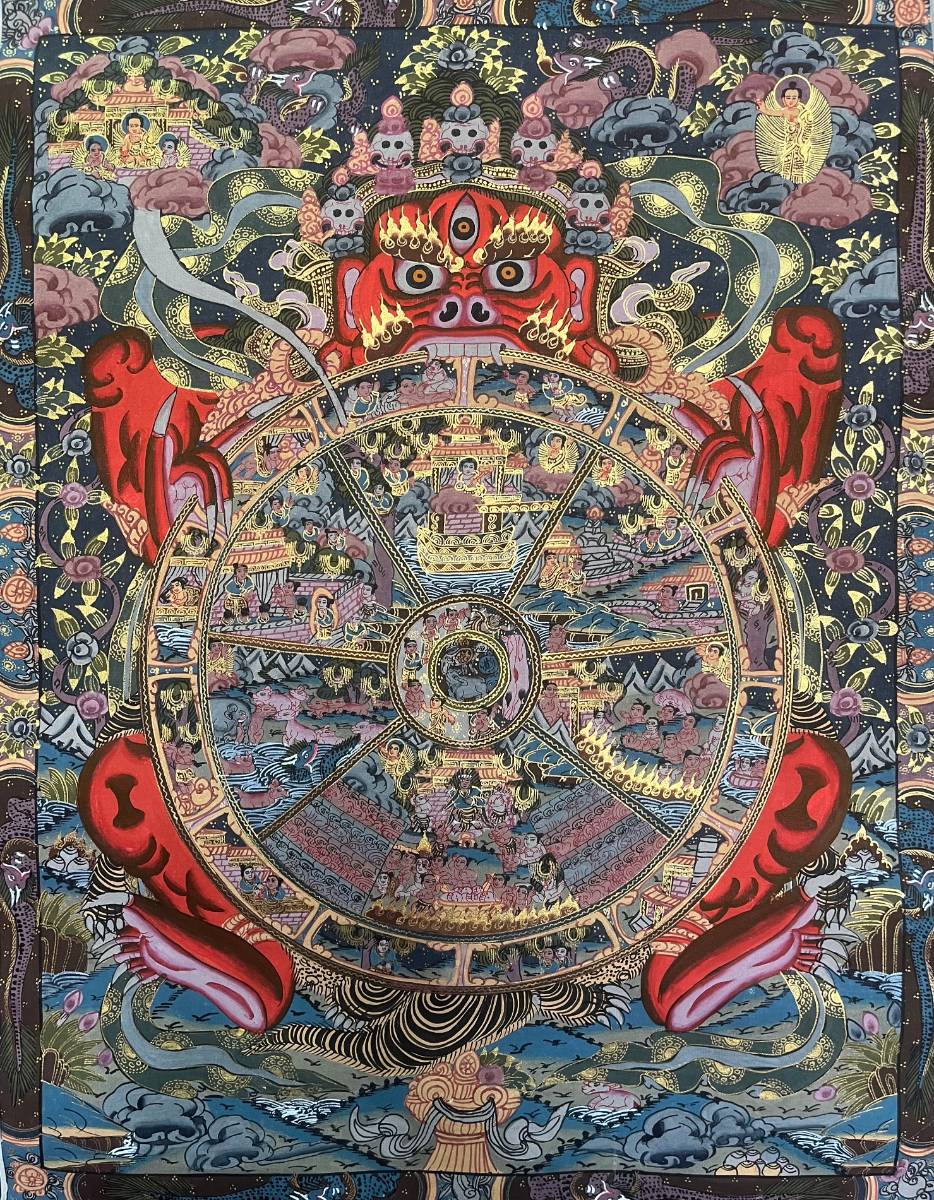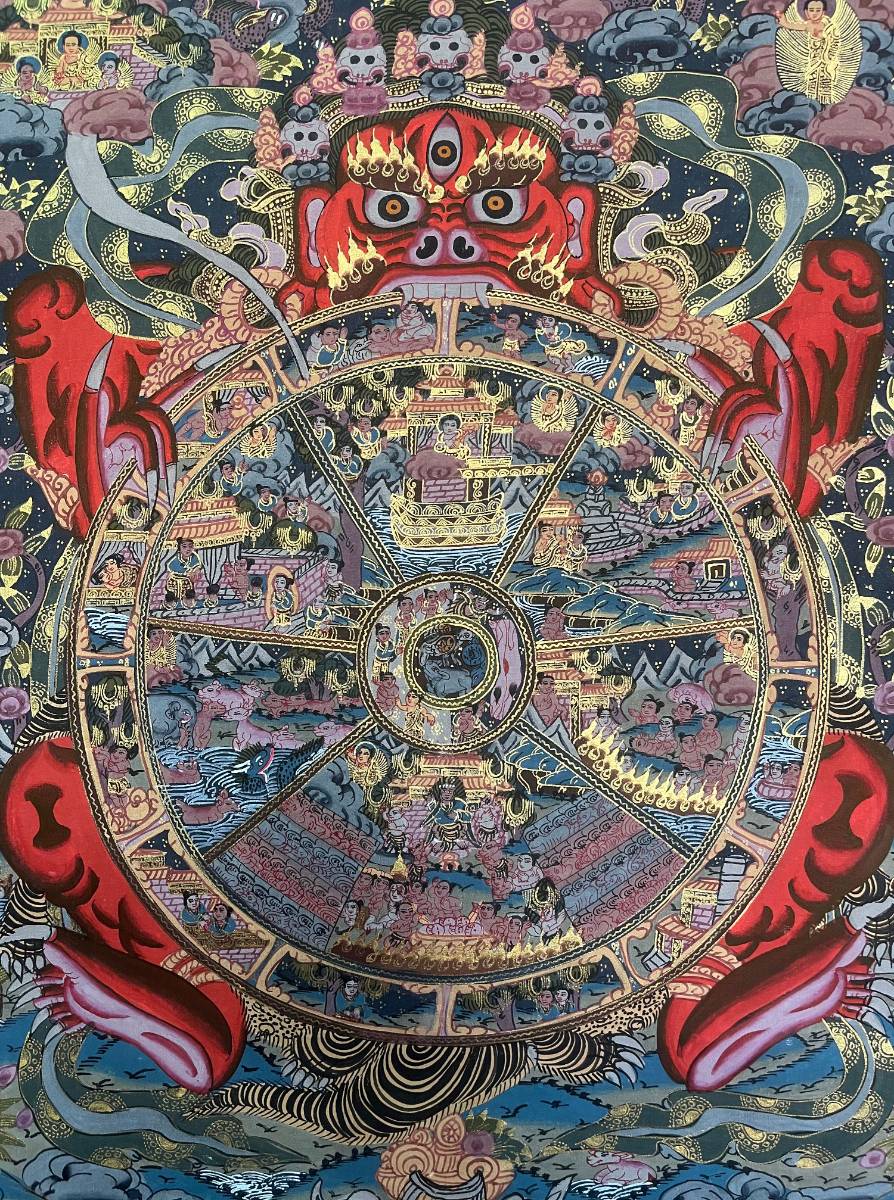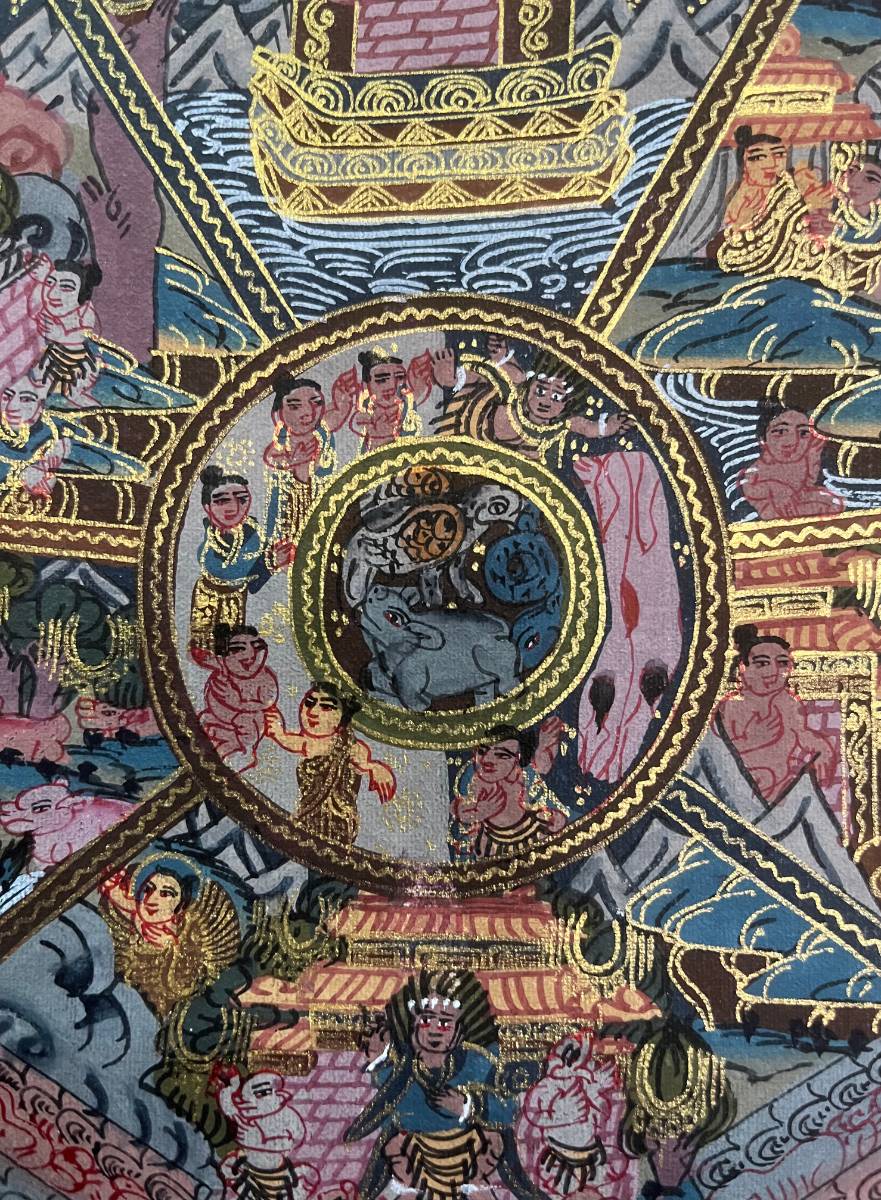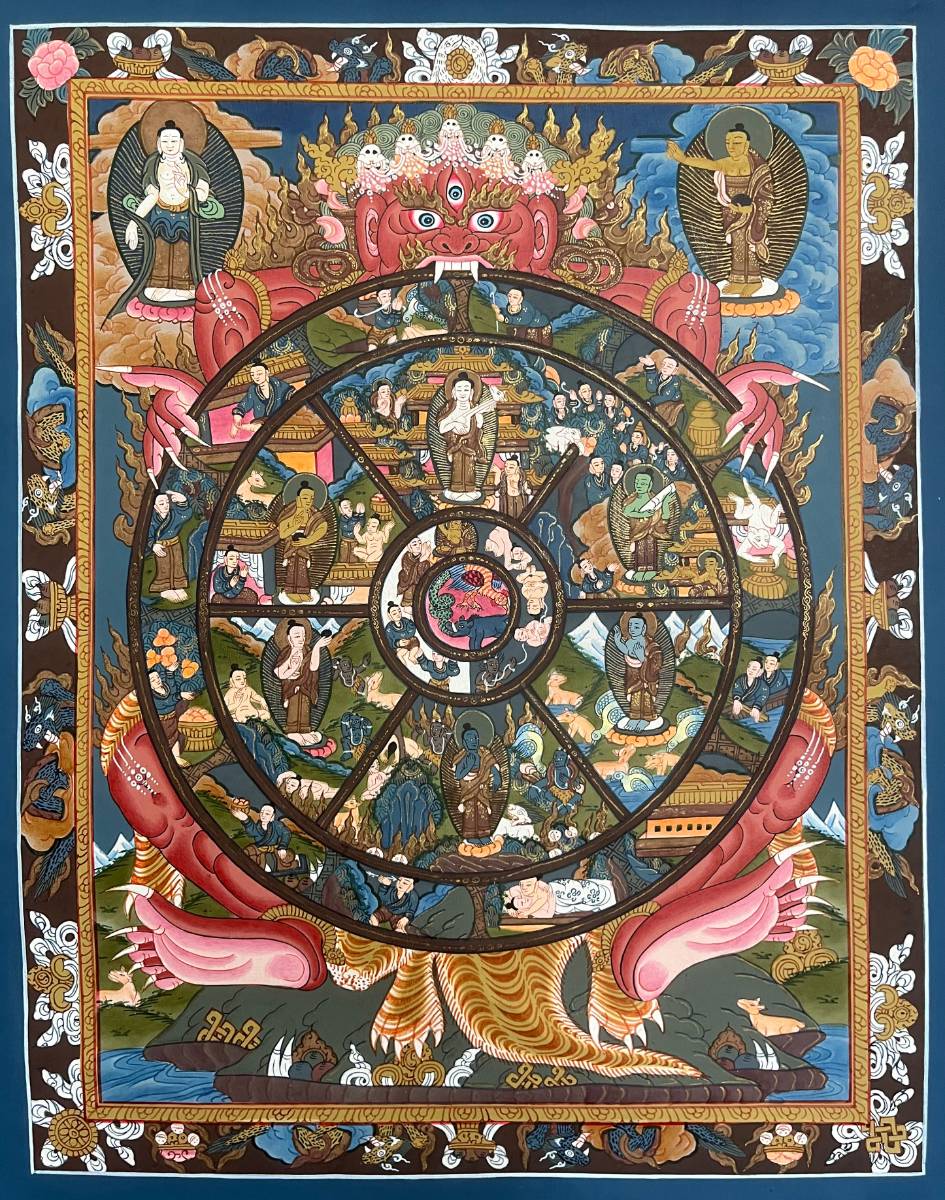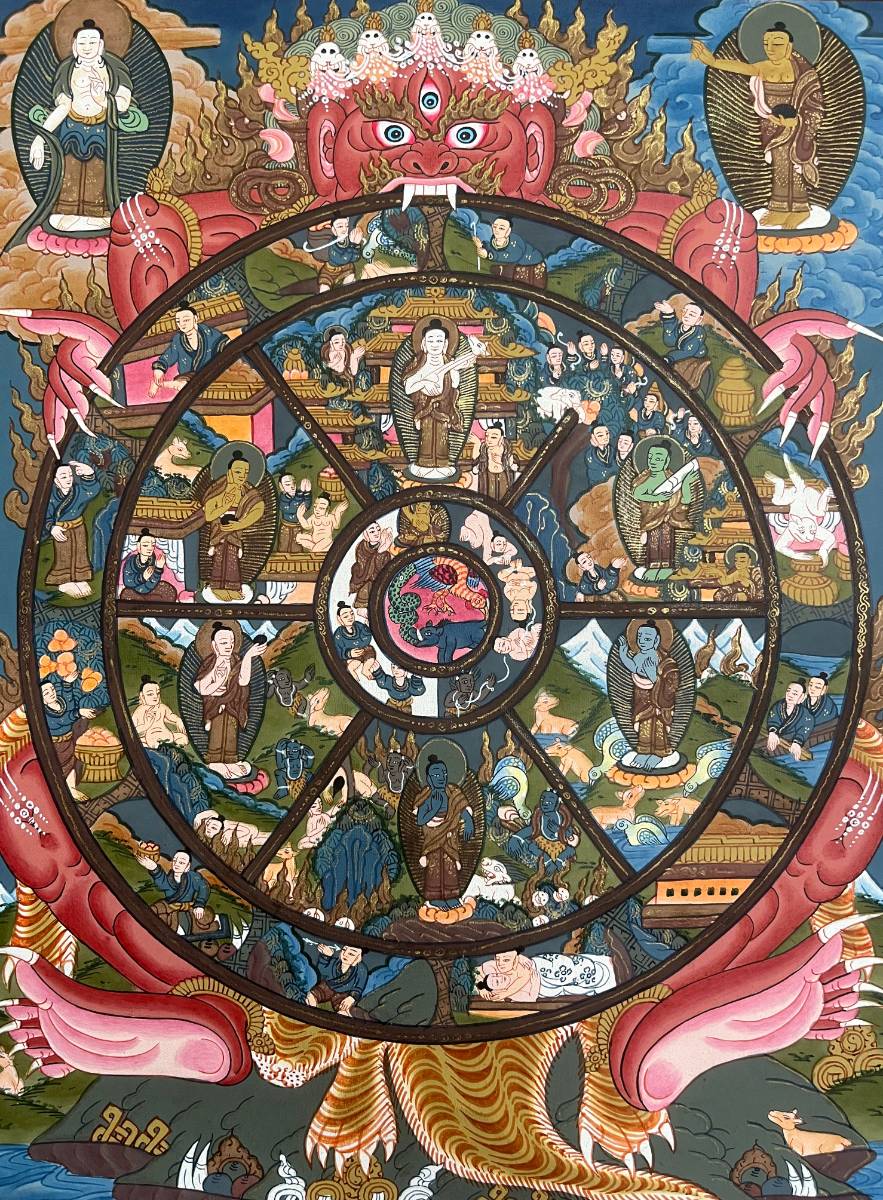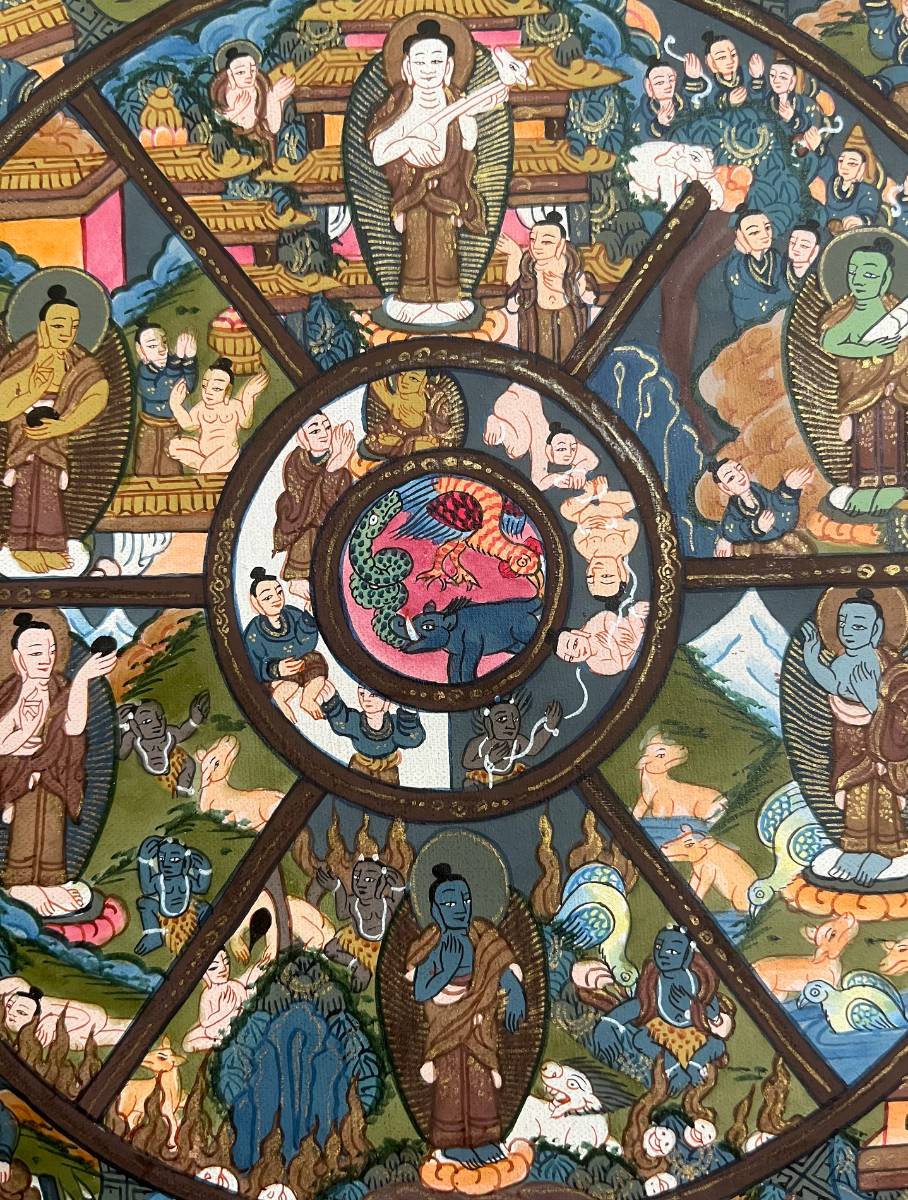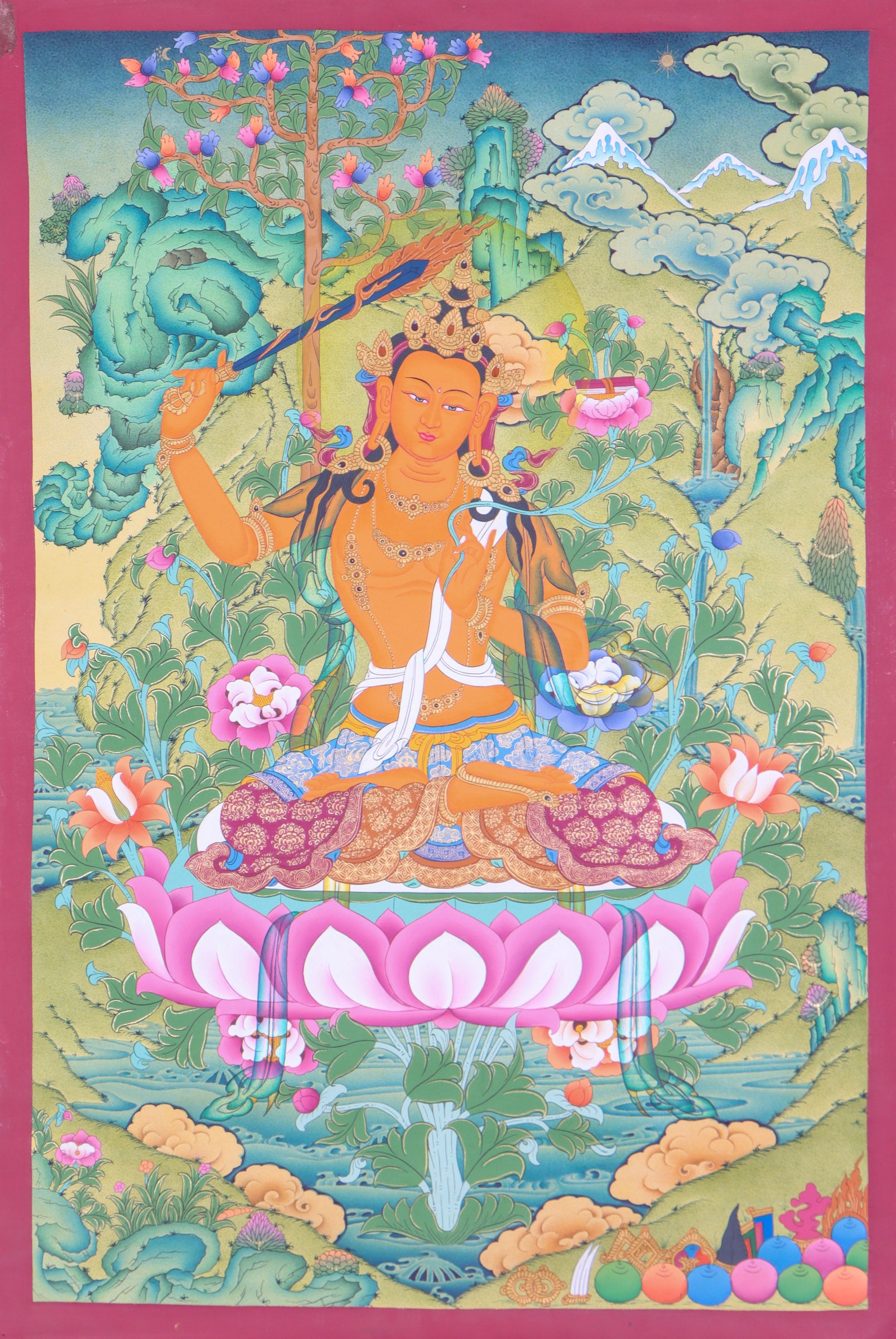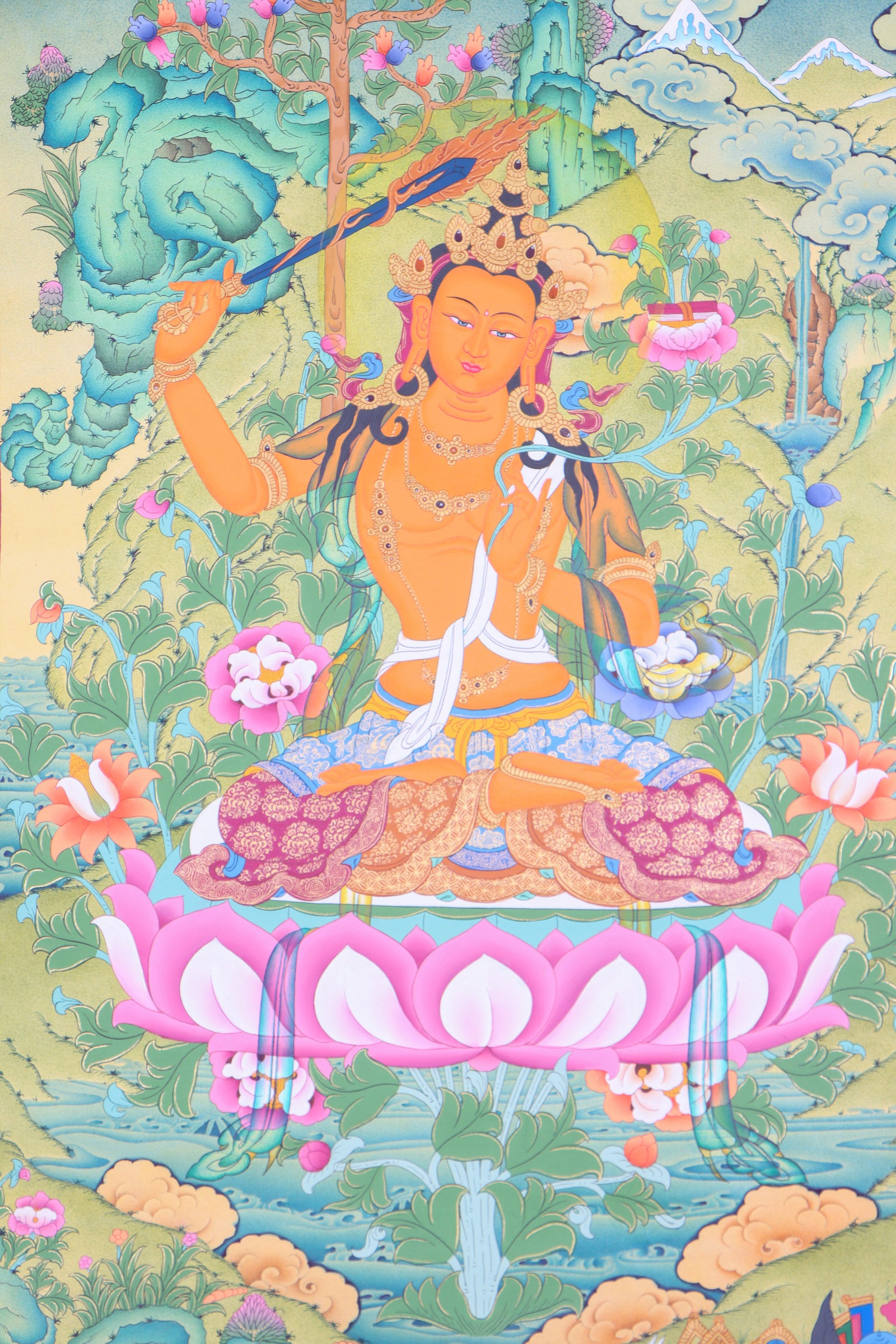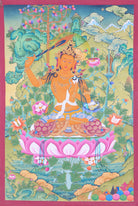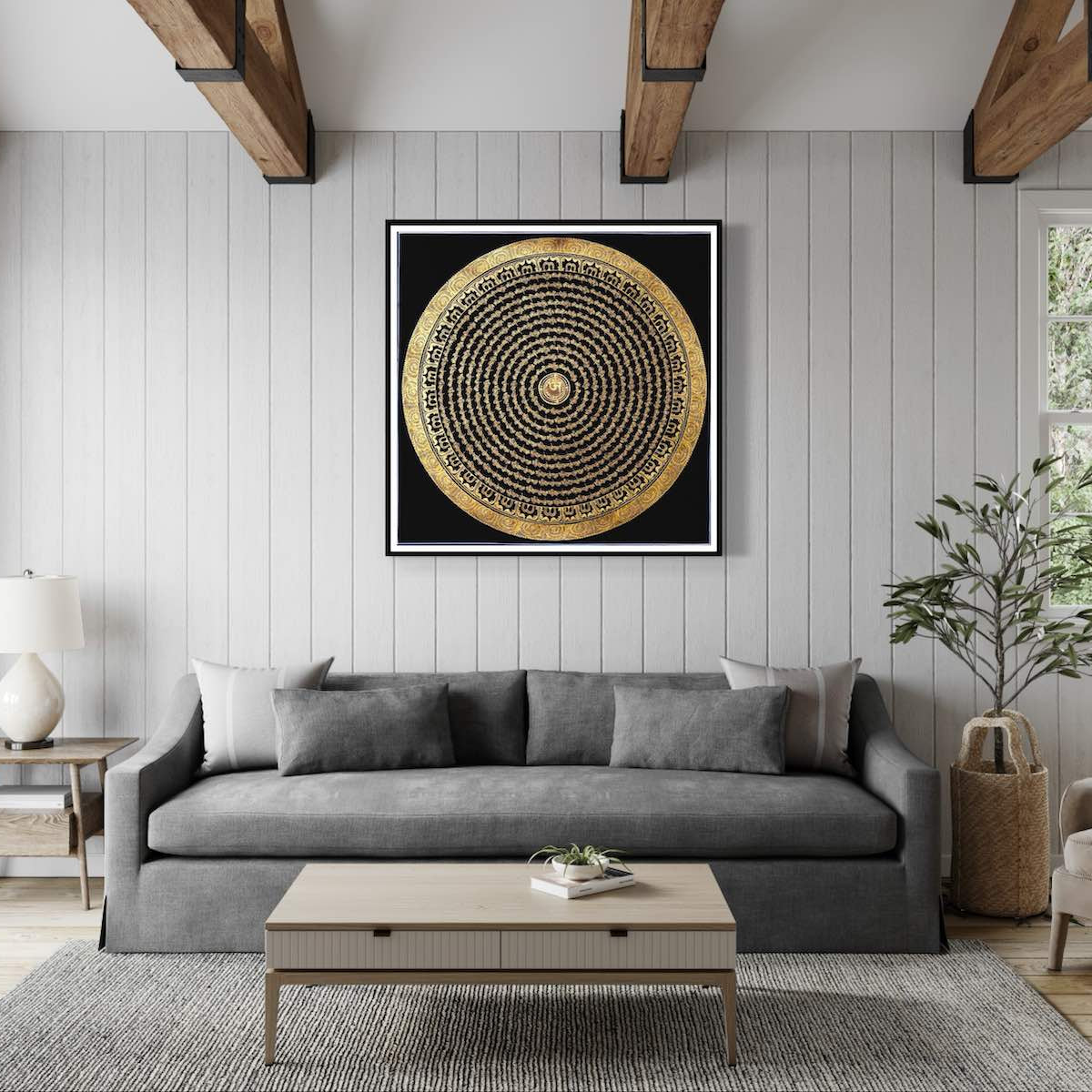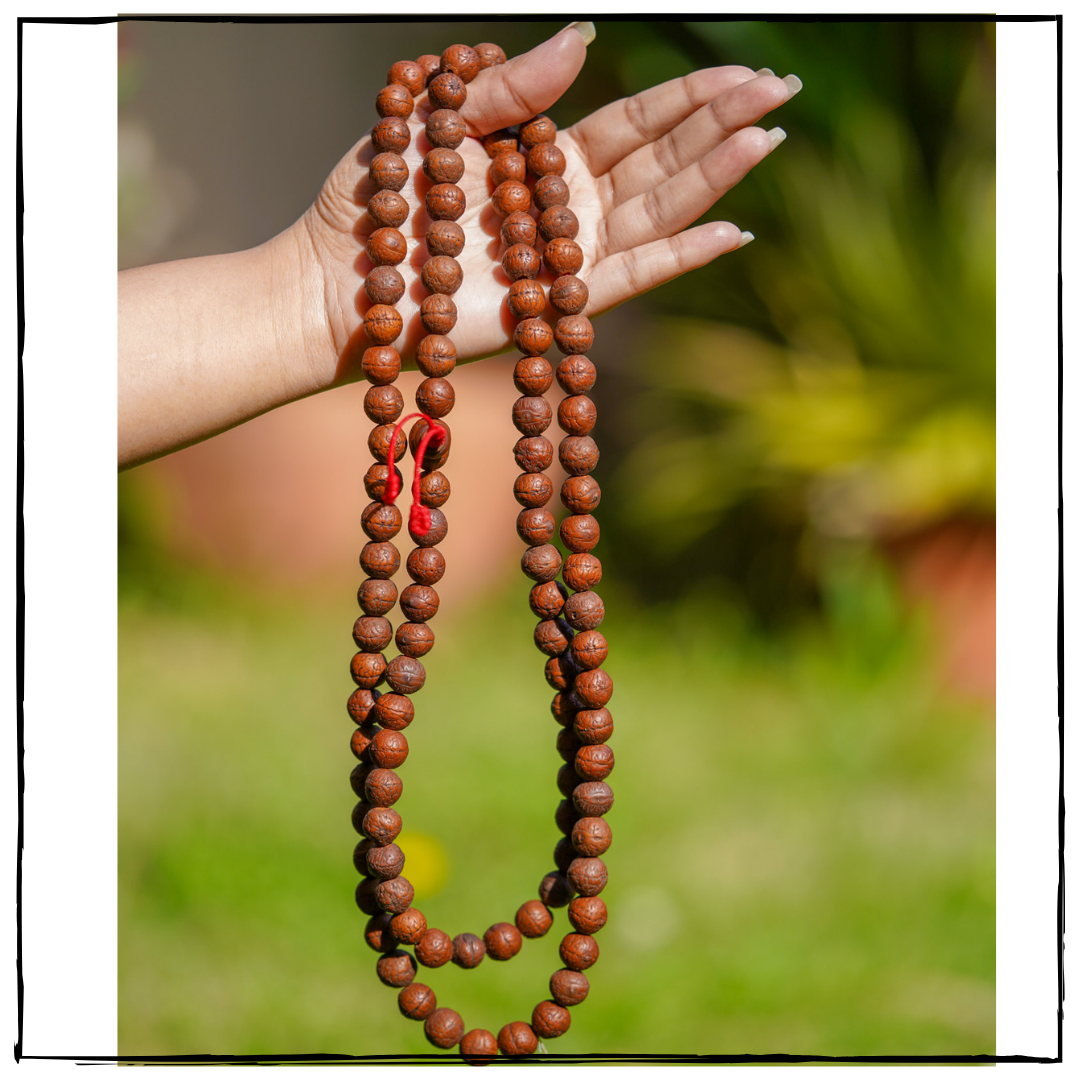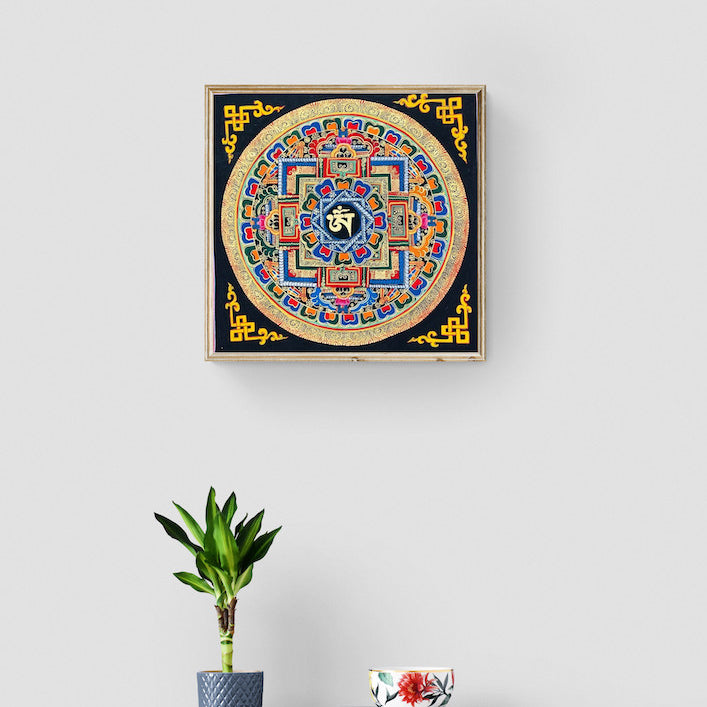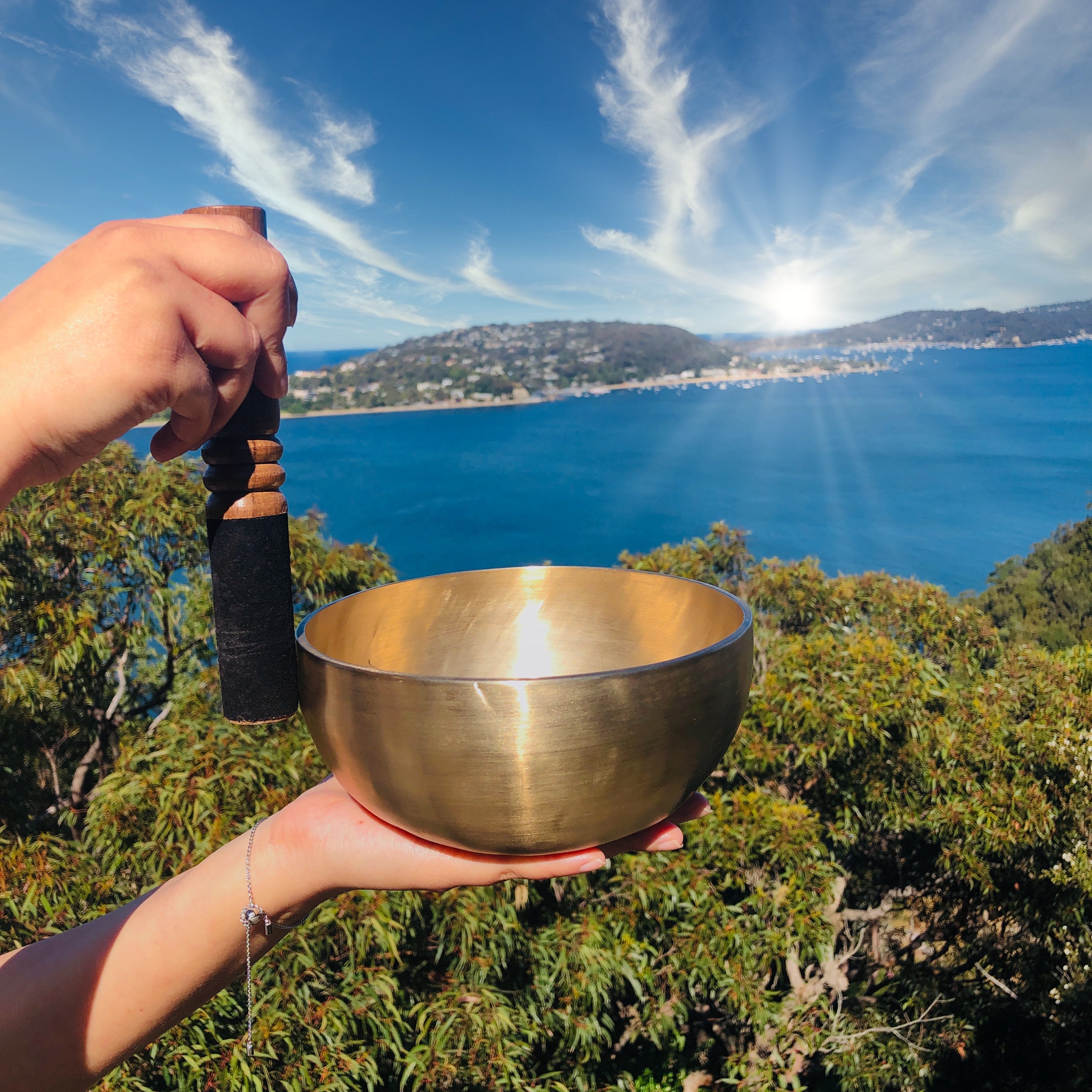Manjushri Thangka Painting
Couldn't load pickup availability
Description
Manjushri thangka painting depicts Manjushri, a bodhisattva (enlightened being) in Mahayana Buddhism who embodies wisdom, knowledge, and enlightenment. Thangka paintings are traditional Tibetan Buddhist artworks that often serve as visual aids for meditation and spiritual practiced Bring a powerful energy to your home. Manjushri Thangka paintings help to cultivate positive energy while also adding an elegant and vibrant focal point to any decoration.
The central figure of the painting is Manjushri, depicted seated on a lotus throne. Manjushri is depicted as a youthful figure holding a flaming sword in one hand, representing the sharpness of wisdom that cuts through ignorance. In the other hand, he holds a flower. The flaming sword represents the wisdom that cuts through the darkness of ignorance and delusion. It signifies the transformative power of wisdom that dispels confusion and leads to clarity. Manjushri is depicted seated on a lotus throne, which symbolizes purity and spiritual development. The lotus grows from the mud but remains untainted, representing the path to enlightenment rising from the challenges of worldly existence. He is also be adorned with various ornaments and garments that symbolize his enlightened nature.
Product Specification:
- Hand Painted
- Materials: Semi-Precious Natural Minerals
- Base: Cotton Canvas
- Origination: Nepal

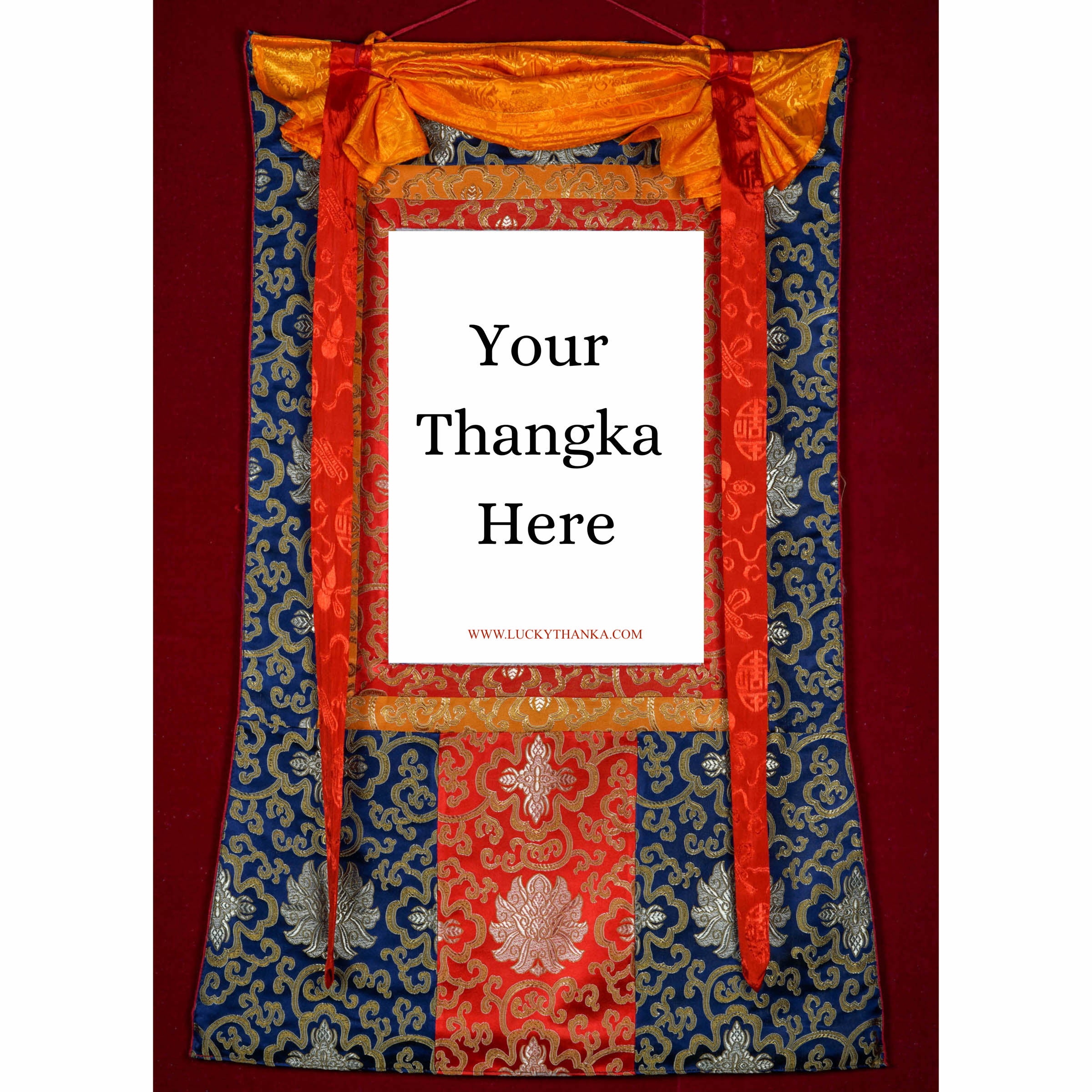
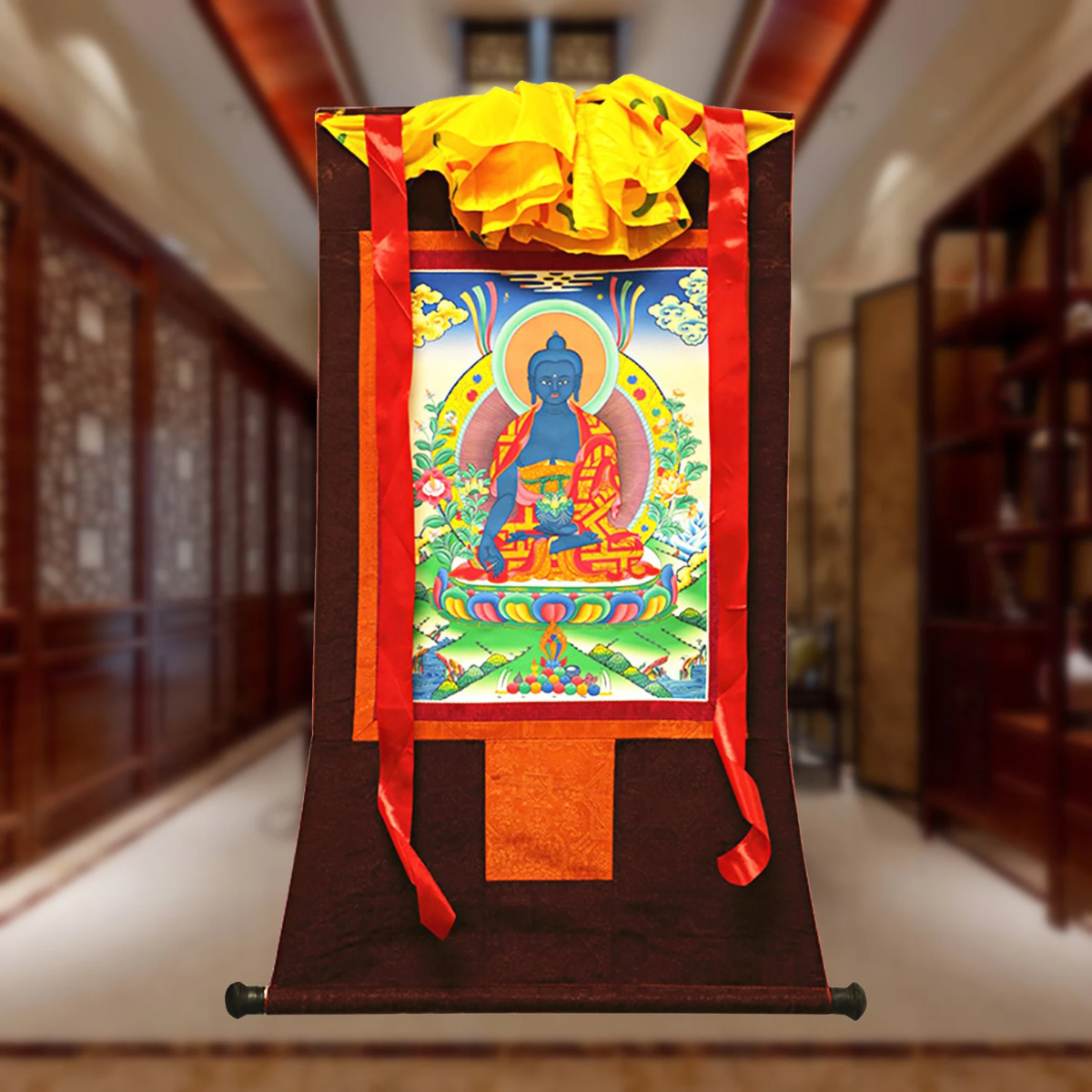
Hand Embroidery Brocade
Want to add a Brocade to your beautiful Thangka Painting? Traditional Style Brocade has been one of the most popular form of mounting as it has a greater religious merit.
Note: Make sure you have added the Thangka to your cart first.
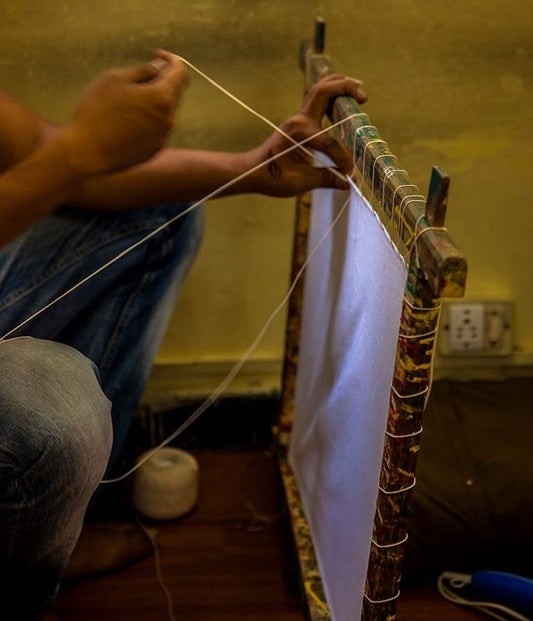
100% Cotton Canvas
Preparing the Cotton canvas before starting to paint a Thangka. This process includes washing, drying, stretching, sizing and everything needed to make a perfect base for the thangka to last for centuries.
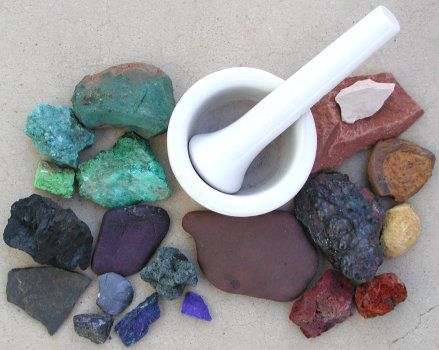
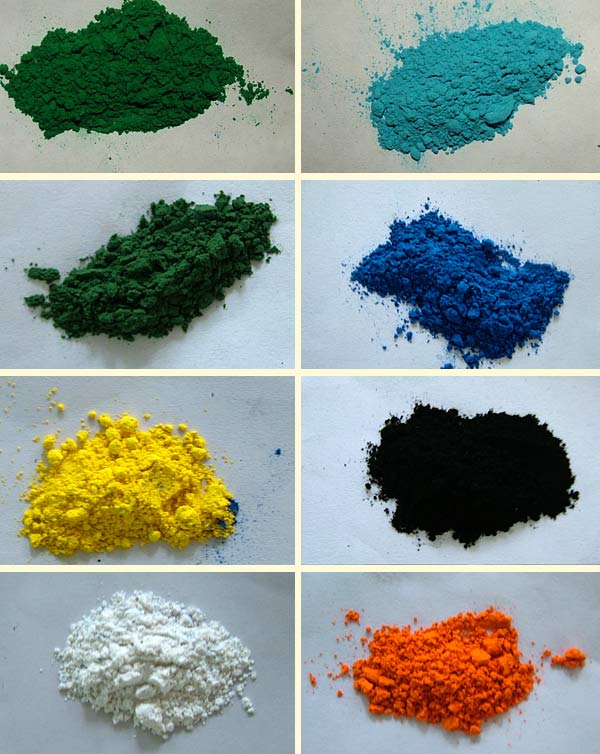
Natural Minerals
Thangka Paintings are painted using the natural minerals. These are firstly grind into the powder form and then used in the thangka as a paint.




